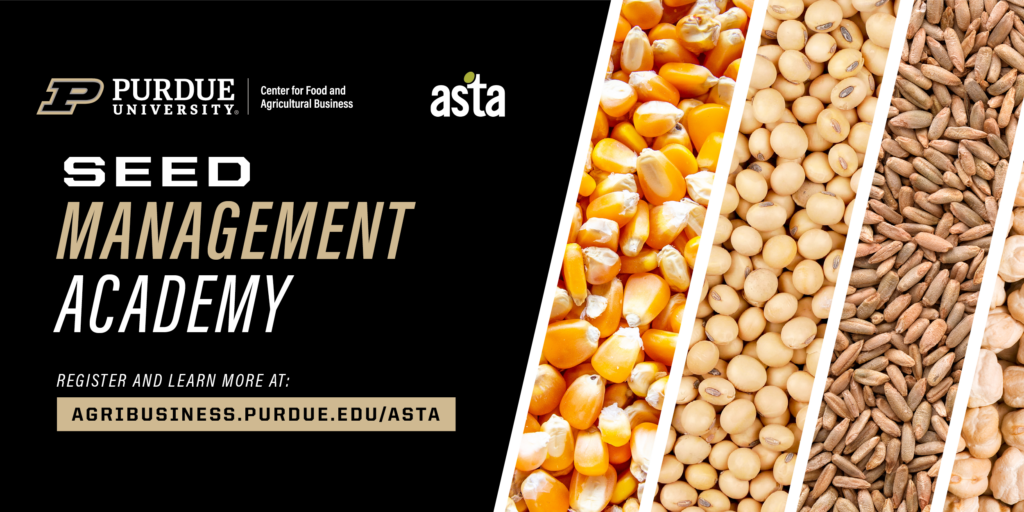 Income is a bigger driver of food demand than population growth and that has supply implications for all of agriculture—including the seed industry, says Allan Gray, director of Purdue University’s Center for Food and Agricultural Business.
Income is a bigger driver of food demand than population growth and that has supply implications for all of agriculture—including the seed industry, says Allan Gray, director of Purdue University’s Center for Food and Agricultural Business.
As incomes increase in developing nations around the globe, so does demand for animal proteins. Animal protein isn’t as efficient to produce in terms of energy use and energy conversion, as are plant-based diets. More demand for animal protein means more demand for the crops to feed them.
“Of the energy it takes to produce animal protein, only about 10 percent translates to output,” said Gray, who also is a professor of agricultural economics and the Land O’Lakes Chair for Food and Agribusiness. “In other words, it takes far more crop production to feed animals to meet animal protein demands than it does for people to eat primarily plant products.”
Meeting those energy demands means the agriculture industry has to make a shift in how it looks at crop yields and food supply.
Limited availability of fresh water supplies and land well suited for crop production combined with flat or slowing yield trends in major staple crops (think: wheat, soybeans and corn), means that increasing yields is going to require some creativity. Gray and colleague Michael Gunderson, associate professor of agricultural economics and associate director of the Center for Food and Agricultural Business, believe that creativity will come in the area of total factor productivity, or TFP.
TFP, in the simplest terms, is the portion of crop yield that isn’t explained by measurable production inputs. It’s more about farm management practices. It’s also about gaining a better understanding of the interactions between soils, seed, fertilizer and other inputs, then capitalizing on those relationships. TFP also can include the effects of policy and infrastructure, especially in countries where governments are unstable and supply chains are weak.
“While there is still some potential in crop genetics, it likely isn’t enough,” Gray said. “Farming practices hold a lot of promise for increasing yields. For the seed industry specifically, that means learning how to execute on research and development, then translate it to the farmer. There will always be a farmer between input suppliers and yield. The seed industry has to identify what it can do to better market improved management practices to the growers.”
That’s not to say that research into biological methods of increasing crop yields isn’t still vitally important—it is. But the opportunities might be limited, according to a 2014 study by the Australian Centre for International Agricultural Research (Crop yields and global food security: Will yield increase continue to feed the world?).
Biological yield increases, or those not influenced by TFP, depend on three main factors:
• Photosynthetically active radiation intercepted by the green crop tissue.
• Radiation use efficiency of the plant.
• Harvest index, or the measurement of the portion of the plant devoted to grain.
According to the study, as summarized by Thomas Hertel, distinguished professor of Purdue Agriculture, the first and third elements are limited biophysically, likely constraining further potential yield growth to roughly 20 percent more than current levels. (Download Hertel’s full report, The challenges of sustainably feeding a growing planet, by clicking here.)
Enter: TFP.
“Total factor productivity is the definition of sustainability,” Gray said. “It’s about figuring out how we put in the same amount of or less inputs, but get more out.”
For example, Gunderson related the idea back to the way computer technology has developed.
“If you look at computers today, you’ll see that we get far more out of them with fewer inputs than ever before,” he said. “Agribusinesses have to figure out their role in helping producers adopt that same model.”
Gray and Gunderson will present Drivers of Change in Agriculture – Implications for the Seed Industry at the upcoming American Seed Trade Association Management Academy. The session will include supply and demand drivers and ways the seed industry can adapt and leverage potential.
The academy runs March 7-11 in West Lafayette, Ind. Register at http://agribusiness.purdue.edu/asta.
:



